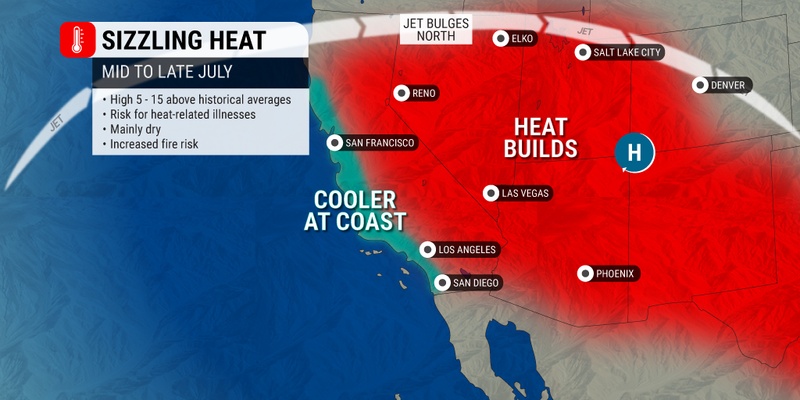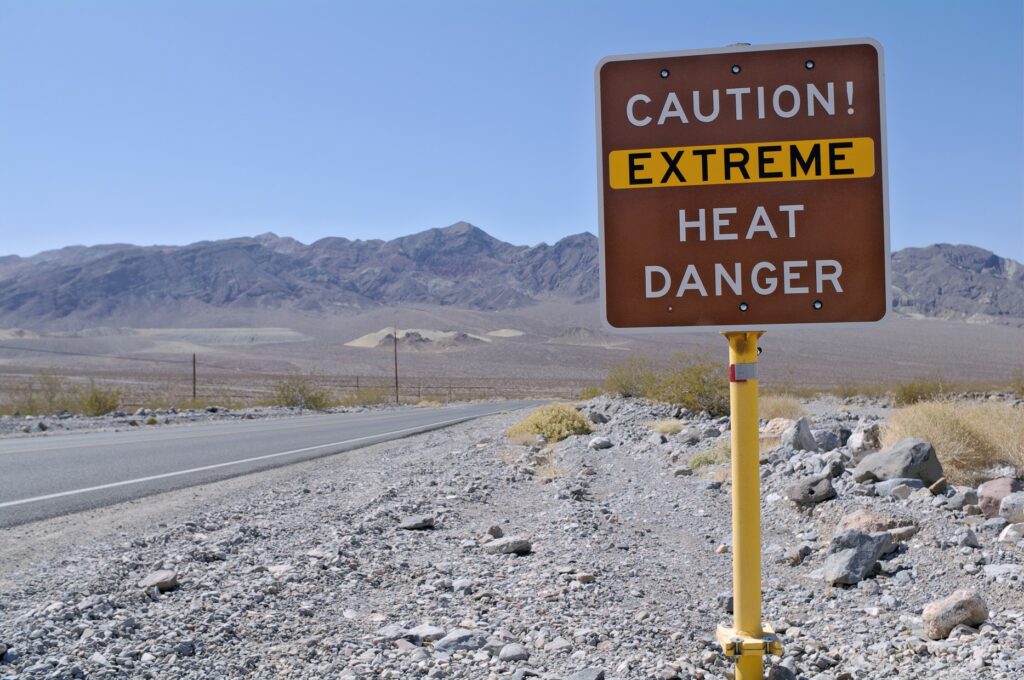
Heavy Rain, Flooding, and Chance of Severe Weather Staring Down the Southern U.S.
January 22, 2024
Posted: July 14, 2023 10:30 am





Just when you think it cannot get any hotter in the Desert Southwest, the mercury inches up another notch. The weekend will bring some of the highest readings of the year across many populated areas of this corner of the country. Here are details on this scorcher of a forecast.
The temperatures are forecast to continue on this upward trajectory well into next week, putting cities such as Phoenix and Las Vegas approaching record territory. The extreme heat will raise the risk of illness and wildfires.
Excessive heat warnings are in place for Phoenix, Las Vegas, Palm Springs, and more. The heat is being blamed on a large area of high pressure that has formed a heat dome over the region. This zone of high pressure will pair with a pronounced northward bulge in the jet stream bringing the heat up from the south.
In addition to being uncomfortable, the heat and intense sunshine can trigger a number of heat-related illnesses. These risks are the greatest in vulnerable populations, including the elderly, young children, and individuals with underlying health concerns. It is also important to remember that the real feel readings can easily surpass the actual temperatures when the sun is shining brightly.
Friday will bring the mercury to within a few degrees of daily high records across much of Arizona, the southern portions of Nevada, and the interior desert of Southern California.
By Sunday, the heat will be the most intense in California’s Central Valley. For example, Fresno could eclipse the all-time record of any date of 115 degrees. This record dates back over 100 years to 1905. Even if this record does not fall, Fresno is forecast to see temperatures above 105 degrees from Friday through the Wednesday of next week.
The heat wave will also touch coastal Southern California. The temperatures in downtown Los Angeles are predicted to come close to breaking the 90-degree benchmark over the weekend.
Death Valley, California will live up to its name with a forecast high of 130 degrees over the weekend. This is the same location that holds the world record for the all-time air temperature high, coming in at 134 degrees back in 1913. While this record will likely stand, there is no doubt that it will be dangerously hot in this part of the desert.

The extreme heat will not ease in Phoenix, a city that has seen nearly two straight weeks of temperatures over 110 degrees. This streak is expected to continue into next week. Forecasters also warn that the Valley of the Sun could notch a reading at the 120-degree mark as the heat continues to build across the metro area. The all-time high for Phoenix is 122 degrees, recorded in June of 1990.
Tourists in Las Vegas will find it increasingly difficult to walk around the famed Strip thanks to the heat. Sin City’s all-time record high is 117 degrees, a benchmark that could be in danger of falling on Saturday through Monday.
It will also be unseasonably warm in Salt Lake City. The capital city of Utah will experience readings in the upper 90s for the next several days.
The hot and dry weather will bring the danger of wildfires across the region. Vegetation across the lower elevations is becoming drier and drier with each passing day without moisture. While the excessive moisture over the winter and spring seasons helped to alleviate the drought out West, the rain and snow also created more growth to serve as fuel for summer wildfires.
As such, local officials are warning residents to exercise care when enjoying campfires or using grills. Much of Utah and Arizona is listed at an elevated risk of wildfires because of this weather pattern.
This is the time of the year when the North American Monsoon Season typically fires up. The change in wind direction works to bring up tropical moisture from the Gulf of Mexico, Mexico, and the Pacific Ocean. However, the arrival of this moisture is running behind schedule this year due to the current climate patterns.
Meteorologists are predicting that some parts of New Mexico, eastern Arizona, and southern Colorado may see a slight increase in sporadic thunderstorms in the coming days. However, the moisture associated with these storms will be sparse. Instead, the storms will deliver the risk of dry lightning strikes that could ignite wildfires across the increasingly dry landscape.
Families out on vacation in the Great Outdoors will want to be mindful of afternoon thunderstorms that pop up out of nowhere as the monsoon starts to kick into high gear.
Did you find this content useful? Feel free to bookmark or to post to your timeline for reference later.

January 21, 2024

January 19, 2024

January 18, 2024